How to Buy and Sell Amazon Return Pallets in 2025
Download Amazon Seller Guide
This guide will help you get started, understand the basics of Amazon selling, and explain in simple words how it all works.

Did you know that savvy sellers can capitalize on returned Amazon products? Returned items on Amazon often don't go back to the original sellers. In many cases, returning products is costly, making it impractical to retrieve them from Amazon's warehouse.
Such returns are bundled into Amazon return pallets and sold to third-party buyers at discounted rates. This creates a profitable opportunity for sellers to buy low and sell high.
In this post, we'll explore purchasing and reselling returned products, and provide you with all the information you need to capitalize on this opportunity in 2025.
What Are Amazon Return Palettes?
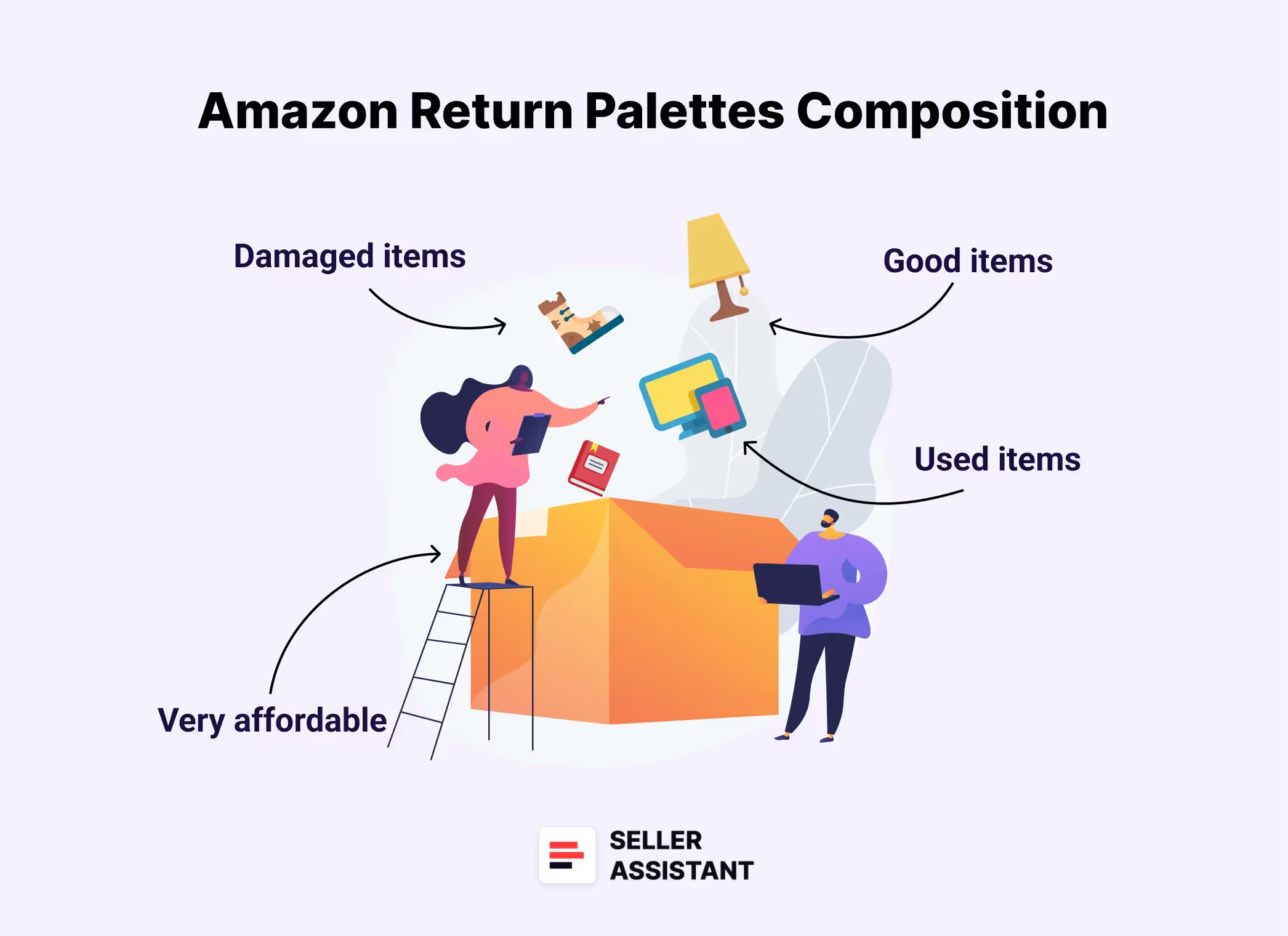
Amazon return pallets, also known as liquidation pallets, are large crates filled with a mix of returned items, sold at discounted prices. They may contain a mix of different products or items of specific types, such as clothes, books, electronics, or furniture.
While many of these items may be damaged, defective, or used, there are also numerous products in good condition that were simply unwanted by customers.
The contents of each pallet are unpredictable, and there's no guarantee of the potential profit. However, since these pallets are sold at very low prices, there's an opportunity to make a decent profit.
Depending on where you buy them, return pallets may be sold through online auctions where you can bid on them or purchase them at a set price. It's important to examine the pallets before buying to avoid potential losses. Proper research can help you minimize risks and increase your chances of making a profit.
Types of Amazon Return Pallets
Amazon return pallets come in various types, each catering to different kinds of sellers and inventory needs. Here are the four main types.

Large products ("Bigs")
"Bigs" are perfect for larger retail stores as they include 26 tall pallets filled with big-ticket items like televisions, refrigerators, furniture, and large garden goods. These pallets have a lower piece count but require ample storage space. They are ideal for local sales, eliminating the need for shipping large items to customers.
Small products ("Smalls")
"Smalls" consist of a diverse assortment of smaller items such as sunglasses, watches, electronics, and accessories. While it takes time to sort through these products, especially for online listings, they can contain highly valuable and profitable items. Be prepared to invest time in sorting to uncover hidden gems.
High retail
High retail pallets contain Amazon's best-selling and most popular items. These pallets have a lower item count but offer highly sought-after products, leading to potentially faster turnover. However, the high competition for these items can result in smaller profit margins.
Clothing
Clothing pallets can include up to 1,200 items, featuring a mix of men's, women's, children's, and baby clothes. These pallets may also contain designer and branded apparel, along with accessories like belts, scarves, and handbags. Most items are in good condition and ready for resale, making them ideal for flea markets or thrift shops.
Mystery pallets vs. manifested pallets
When dealing with Amazon return pallets, you will come across two main types: mystery pallets and manifested pallets. Each type has its pros and cons.

Mystery pallets
Mystery pallets contain a random assortment of items without a detailed inventory list. The contents are unknown until the pallet is opened, which poses a risk.
These pallets are typically sold at lower prices due to the uncertainty involved. Sellers who opt for mystery pallets need to be prepared for a mix of high-value items and potentially less desirable products.
This type of pallet can be exciting but requires a willingness to take on the gamble of not knowing what you’re getting.
Manifested pallets
Manifested pallets come with a detailed inventory list that outlines the specific items included in the pallet. This transparency allows buyers to know exactly what they are purchasing, which reduces the risk of unwanted surprises.
Manifested pallets are generally sold at higher prices due to the clear value and lower risk associated with them. Sellers who choose manifested pallets can make more informed decisions and strategize their resale plans more effectively.
This type of pallet is ideal for those who prefer a more predictable and calculated approach to purchasing return goods.
How Much Do Amazon Return Pallets Cost?
If you're considering buying and selling Amazon return pallets, you might be curious about their cost. The price depends on the pallet content and where you buy them.
Typically, Amazon return pallets range from $300 to $400, but the price can vary depending on the size and content of the pallet. For instance, a large pallet filled with electronics can cost over $1,000, while a pallet with essential items might be priced between $100 and $500. On the online auctions prices start as low as $200 to $800 and can reach as high as $8,000 to $13,000.
In addition to the purchase price, you should also factor in shipping and refurbishment costs, which can add to your overall investment. There's no guarantee of potential profit, but because these pallets are sold at low prices, they can offer a decent profit margin.
Pros and cons of Amazon return pallets
Amazon return pallets offer an excellent opportunity for sellers to purchase inventory at a fraction of the retail price. However, they come with their own set of advantages and disadvantages that need to be carefully considered before buying them.

Pros
Low purchase cost
Amazon return pallets are sold at significantly lower prices compared to retail value, allowing sellers to potentially maximize profit margins. This affordability makes them an attractive option for those looking to buy in bulk.
Variety of products
These pallets contain a diverse range of items, including electronics, clothing, home goods, and more. This variety can help sellers cater to a broader market and meet different customer needs.
Profit potential
Since the purchase cost is low, there is a potential for high profit margins. Sellers can find valuable and high-demand items in good condition, which can be sold at a significant markup.
Cons
Unpredictable quality
The quality of items in Amazon return pallets can be highly variable, with some products being damaged, defective, or used. This unpredictability can result in additional costs for repairs or unsellable merchandise.
Lack of inventory transparency
Not all pallets are manifested. Some companies offer pallets without a detailed inventory list, making it difficult to know exactly what you are purchasing. This lack of transparency increases the risk of receiving low-value items.
Additional costs
Besides the initial purchase price, there are additional costs such as shipping, storage, and refurbishment. These extra expenses can quickly add up, reducing the overall profit margin.
How to Buy Amazon Return Pallets?
If you're interested in purchasing Amazon return pallets, here’s a step-by-step guide to help you get started.

Step 1. Register on a liquidation website
Begin by registering on a reputable liquidation website that offers Amazon return pallets. These platforms connect buyers with bulk merchandise at discounted rates.
Step 2. Review and analyze available return pallets
Once registered, browse through the available return pallets. Take note of the categories and details provided to find pallets that suit your business needs.
Step 3. Place a bid or purchase for a flat fee
You can either place a bid in an auction or buy the pallet for a flat fee, depending on the website’s options. Ensure you set a budget to avoid overspending. Typically you should aim at buying at not more than 20% of retail price.
Step 4. Arrange shipping or pick up at a designated location
After purchasing, arrange for the shipping of your pallet or plan to pick it up from a designated location. Factor in shipping costs and logistics when making your decision.
Where to Buy Amazon Return Pallets?
If you're looking to purchase Amazon return pallets, several reputable companies offer these products at discounted rates. Here are ten top companies where you can buy Amazon return pallets, including links to their websites and a brief description of each.
Amazon Bulk Liquidations Store

Amazon Bulk Liquidations Store is Amazon’s own liquidation store offers a variety of return pallets directly from their warehouses. It’s a reliable source for authentic Amazon returns.
B-Stock

B-Stock connects retailers, including Amazon, with buyers looking to purchase returned and excess inventory through online auctions.
Liquidation.com
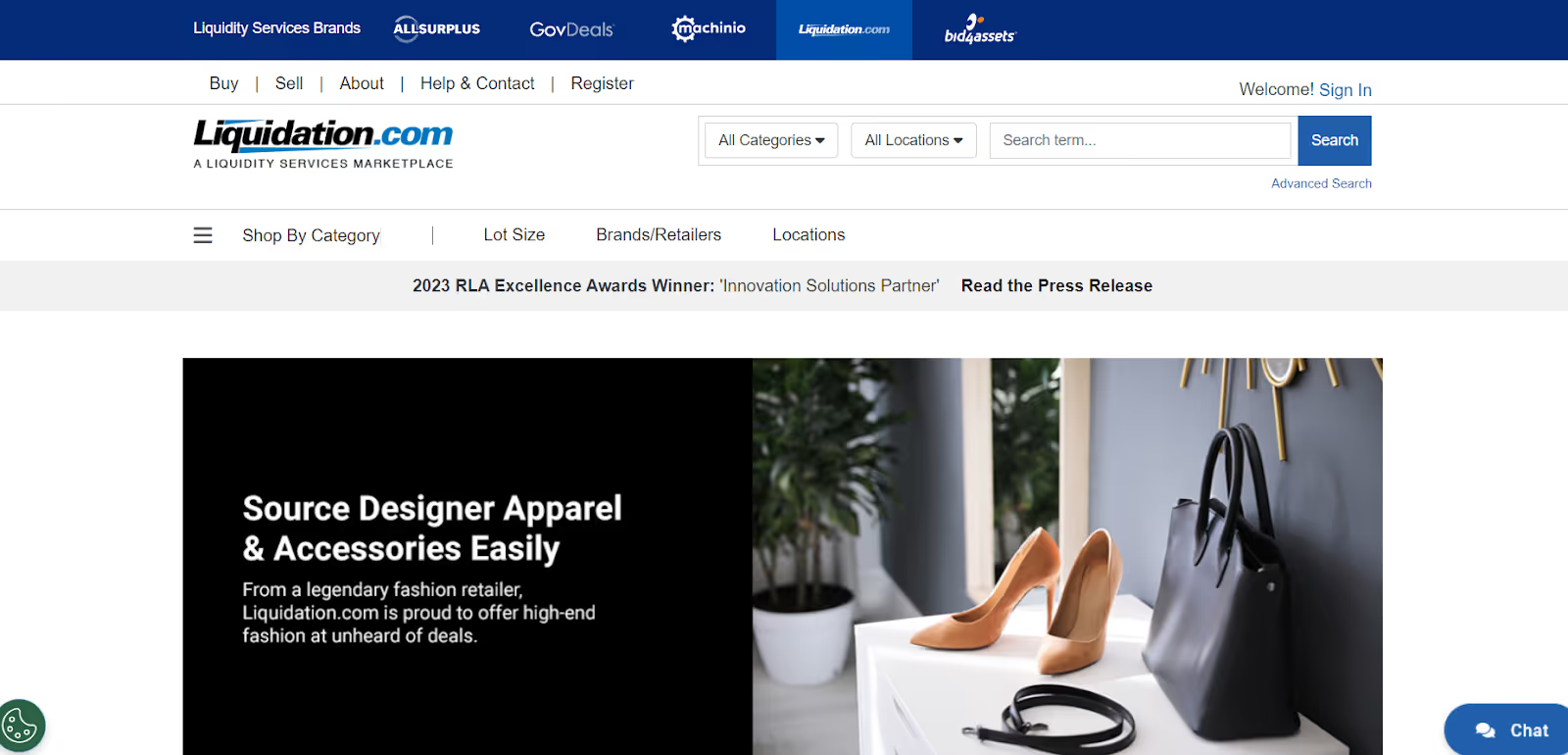
Liquidation.com is a leading online auction marketplace for surplus inventory, including Amazon return pallets. It offers a variety of items across different categories.
DirectLiquidation

DirectLiquidation is a marketplace that sells liquidation merchandise from top retailers, including Amazon. Buyers can find a wide selection of return pallets and surplus inventory.
Bulq
Bulq offers a convenient way to purchase returned and excess inventory, including Amazon returns. The platform provides clear manifests for each pallet.
888 Lots
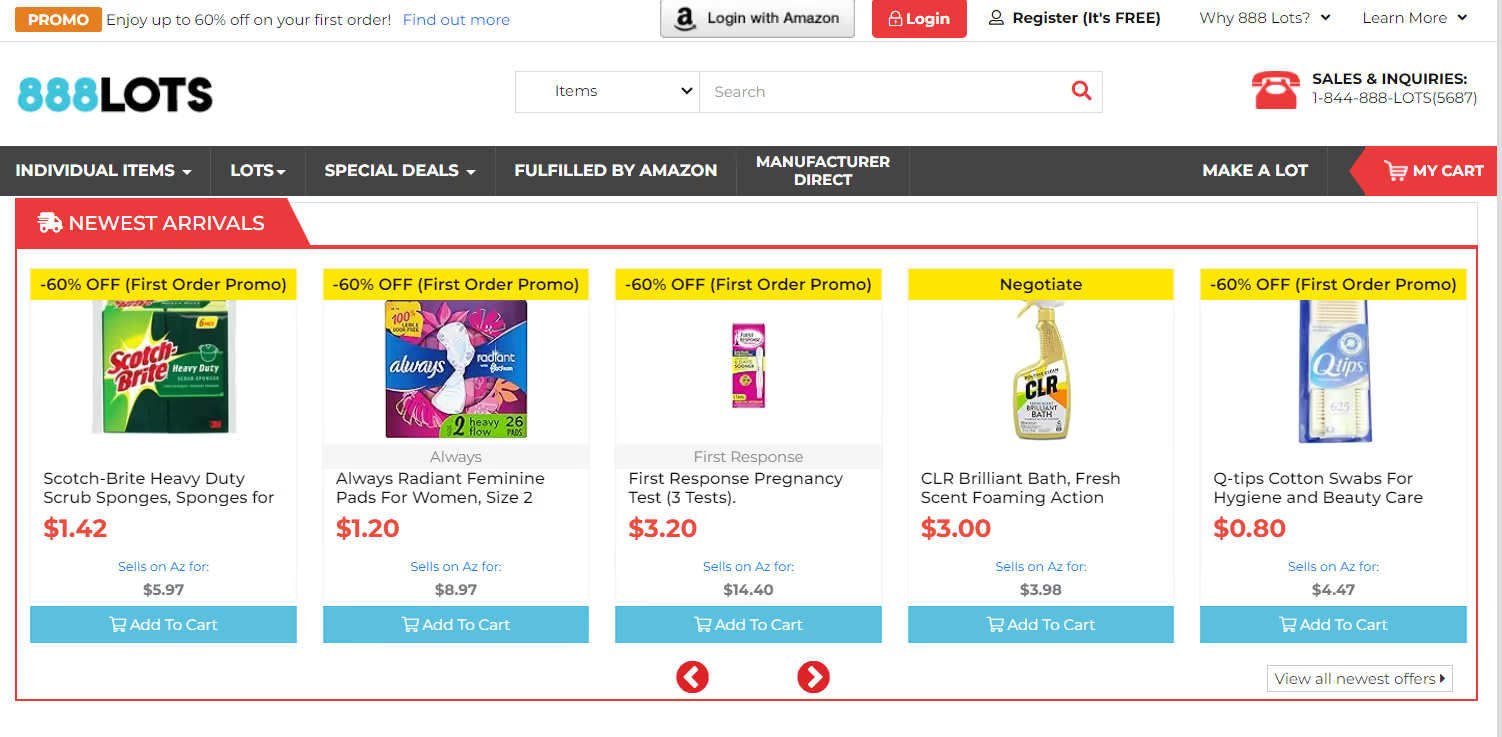
888 Lots specializes in liquidation and surplus inventory from various retailers, including Amazon. The site offers detailed information and fixed pricing for pallets.
Via Trading

Via Trading provides a wide range of liquidation merchandise, including Amazon return pallets. They offer flexible purchasing options and customer support.
BlueLots
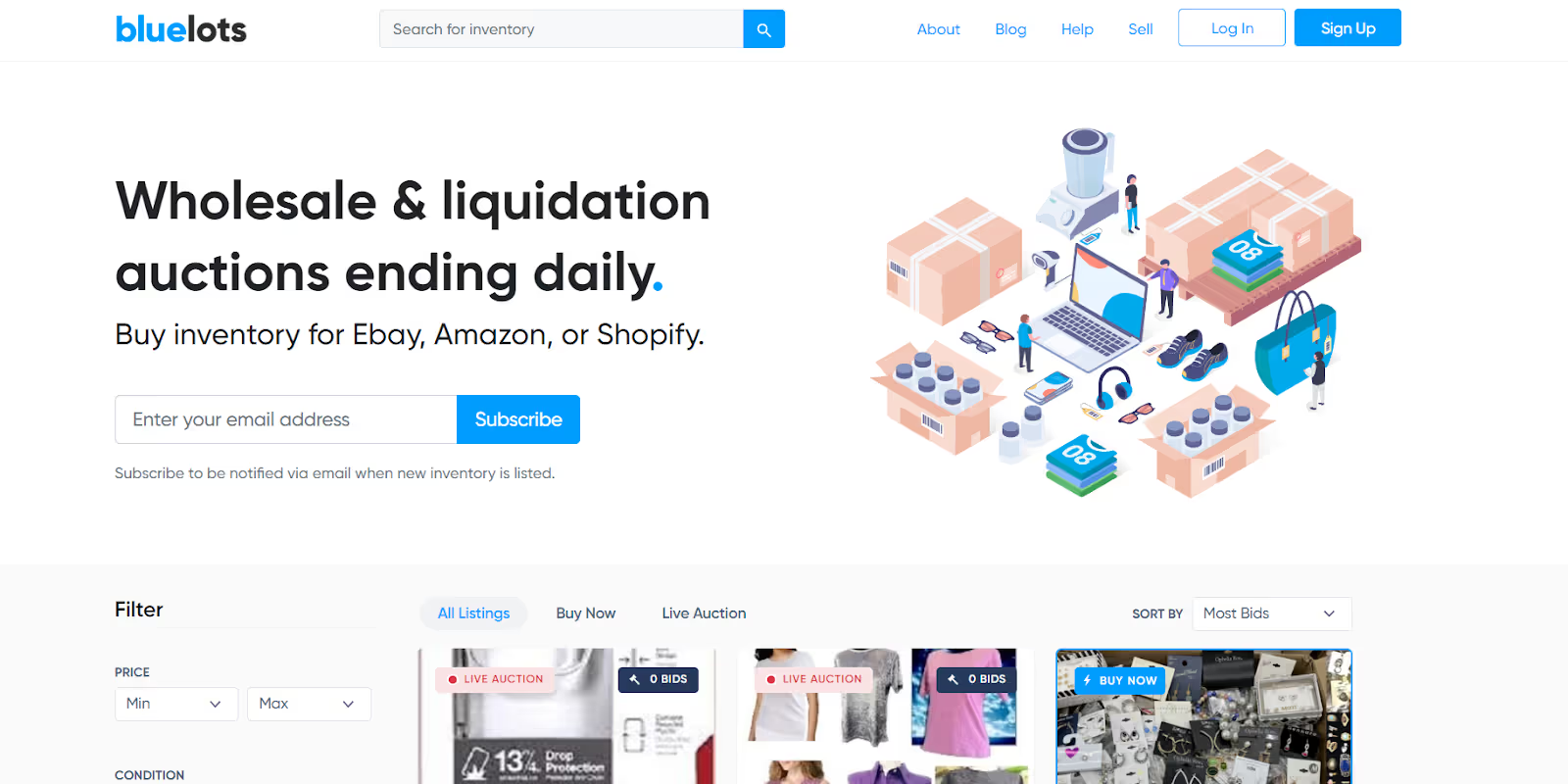
BlueLots connects buyers with excess inventory from top retailers, including Amazon. The platform offers competitive pricing and transparent listing information.
Amlinc

Amlinc, or American Merchandise Liquidators, specializes in liquidation and surplus goods, including Amazon returns. They offer both auctions and fixed-price sales.
Tips to Buy Amazon Return Pallets
Before purchasing Amazon return pallets, consider these essential tips to avoid unnecessary money losses.

Evaluate product condition
Check the listings for information on whether the items are new, refurbished, or damaged. Understanding the condition of the products will help you estimate their resale value and potential profit margins.
Review the manifest
Examine the inventory list, or manifest, provided in the listings. Manifests can range from simple lists to detailed descriptions, including product conditions and reviews. This information is crucial for assessing what you're buying and planning your resale strategy.
Calculate profit margins
Research the selling prices of similar items to estimate your potential returns. Compare the original and used prices, and ensure there is enough margin to cover additional costs such as shipping, storage, and refurbishment.
Consider shipping costs
Be aware of the shipping fees associated with purchasing return pallets. These fees can be flat rates or based on weight. Factor in these costs when evaluating your purchase to ensure they don't eat into your profits.
Estimate pallet processing time and effort
Selling liquidated items requires substantial time and effort to sort, clean, and list. The time needed varies depending on the type of pallet; large pallets might be easier to sort but harder to clean, while smaller pallets can take hours to categorize and prepare for sale. Plan your time wisely to handle these tasks effectively.
How to Sell Amazon Return Pallets?
After purchasing your first lot of Amazon return pallets, it's time to turn those items into profit. Here are the steps you can follow to effectively sell your inventory.

Steps to selling Amazon return pallets
Step 1. Assess and categorize your inventory
Carefully sort through your pallet to identify the items you received. Some products might be ready for immediate sale, while others may need cleaning or repairs. Consider bundling similar items together to create unique offers that attract buyers.
Step 2. Fix and refurbish the items
For any faulty items, try to repair and refurbish them. You can either handle the repairs yourself or use a third-party service. Many minor issues can be easily fixed without significant cost. Additionally, you might be able to salvage parts from some items to repair others.
Step 3. Wreckage the products
If any items come with damaged packaging, repackage them to enhance their presentation. Aim to make the packaging look as close to the original as possible or use pristine plain packaging. High-quality packaging can significantly increase the perceived value of the product, allowing you to sell it at a better price.
Step 4. Add missing or complimentary accessories
Enhance the value of your items by including necessary accessories to complete the set. Selling products with all their original accessories or creating bundles with complementary items can command higher prices. For example, if you're selling a camera, adding straps, stands, lenses, and covers can make the offer more attractive.
Step 5. List and sell
Finally, list your refurbished and repackaged items on various sales platforms. Add the right condition type. Highlight any repairs, accessories, and repackaging efforts to showcase the added value.
Where to Sell Inventory from Amazon Return Pallets?
After purchasing and preparing your Amazon return pallet items, the next step is to find the right platforms to sell your inventory. Here are some popular options.
Online marketplaces
- eBay
eBay is one of the largest online marketplaces where you can auction or list items for a fixed price. It’s suitable for both new and refurbished products.
- Amazon
Amazon itself allows you to sell used items as a third-party seller. Listing your items on Amazon can reach a vast audience, especially if the products are in good condition.
- Etsy
Etsy is ideal for selling vintage or handmade items. If you have unique or customized goods from your pallets, this platform can be a good choice.
Social media and local platforms
- Facebook Marketplace
Facebook Marketplace lets you sell items to local buyers, making it easy to connect with your community without shipping costs.
- Craigslist
Craigslist is another local platform where you can list items for sale in various categories. It’s useful for selling bulky items that are difficult to ship.
- OfferUp
OfferUp is a mobile-friendly app where you can sell items locally. It’s a great option for quick sales and local pickups.
Specialized resale platforms
- Poshmark
Poshmark specializes in fashion items, making it perfect for selling clothes, shoes, and accessories from your return pallets.
- ThredUp
ThredUp is an online consignment and thrift store focusing on secondhand fashion. It’s ideal for selling gently used clothing.
- Decluttr
Decluttr is a platform for selling electronics, CDs, DVDs, and other tech items. It offers instant valuations and fast payments.
Your own ecommerce store
- Shopify
Shopify allows you to create your own online store with ease. It’s a good option if you want full control over your sales and branding.
- WooCommerce
WooCommerce is a WordPress plugin that lets you set up an e-commerce store on your existing website. It’s highly customizable and integrates well with various payment gateways.
Flea markets and thrift stores
- Local flea markets
Renting a booth at a local flea market can be an effective way to sell various items from your return pallets. It allows you to reach customers who prefer in-person shopping.
- Consignment shops
Partnering with local consignment shops can help you sell items on a commission basis. This is particularly useful for high-quality fashion and home goods.
Tips to Sell Amazon Return Pallets
Selling inventory from Amazon return pallets can be profitable if approached strategically. Here are some essential tips to help you succeed.
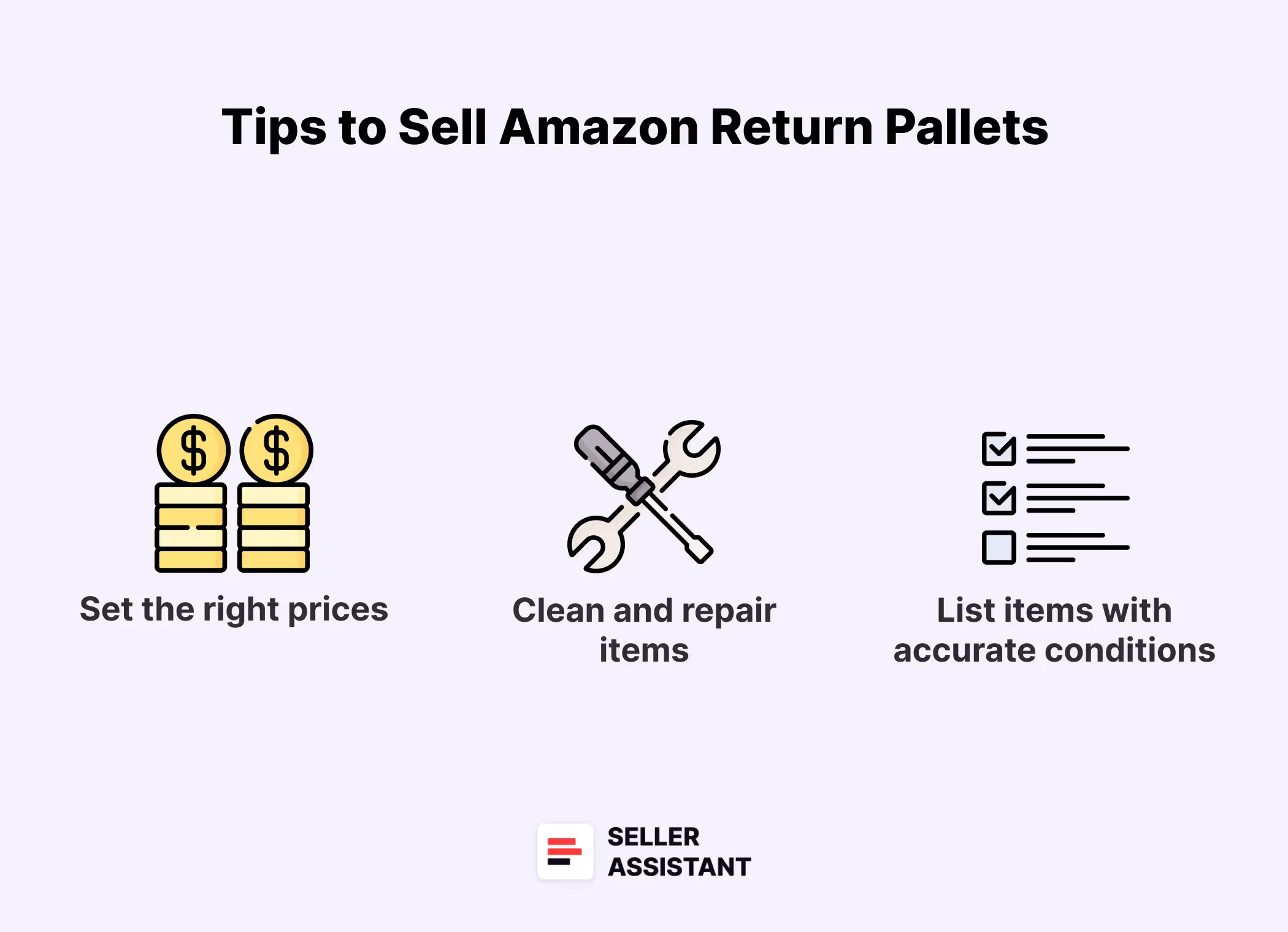
Set the right prices
Browse various online markets to understand the current prices of products. Set your selling prices lower than new items while factoring in other expenses. Always keep an eye on potential profits to ensure a healthy margin.
Clean and repair items
Take the time to clean and repair items from your return pallets. Minor improvements can significantly boost their resale value. Ensure that all products are in top condition before listing them. For electronics, test them to confirm functionality and replace any missing parts if needed.
List items with accurate conditions
When listing items, be sure to accurately describe their condition. Clearly state whether they are new, refurbished, used, or have any defects. Honest offers help build trust with buyers and reduce the likelihood of returns or disputes.
Bundle complementary products
Increase the average order value by bundling different products together. For example, if selling computer components, assemble a CPU with a mix of new and refurbished parts and sell it at a premium. Bundling can create unique offers and attract more buyers.
Optimize shipping
Choose reliable shipping options and provide accurate estimates. Offer free or discounted shipping if possible, as it can be a strong selling point. Pack items securely to prevent damage and provide tracking information to buyers.
FAQ
Can I buy return pallets directly from Amazon?
Yes, you can buy return pallets directly from Amazon through their Amazon Bulk Liquidations Store and Amazon Liquidation Auctions. These platforms allow you to purchase returned items in bulk at discounted prices.
How much does a pallet of Amazon returns cost?
A pallet of Amazon returns typically costs between $300 and $400, but the price can vary depending on the size and content of the pallet. High-value pallets, such as those containing electronics, can cost over $1,000, while pallets with essential items may range from $100 to $500.
Is Amazon Liquidation pallets a real thing?
Yes, Amazon liquidation pallets are a real thing. They consist of returned, overstock, or excess items that Amazon sells in bulk at discounted prices through platforms like Amazon Bulk Liquidations Store and Amazon Liquidation Auctions.
Where to buy Amazon undeliverable pallets?
You can buy Amazon undeliverable pallets from platforms like Amazon Liquidation Auctions and Amazon Bulk Liquidations Store. These platforms offer a variety of undeliverable items sold in bulk at discounted prices.
Where to get Amazon pallets from?
You can get Amazon pallets from online platforms such as Amazon Liquidation Auctions and Amazon Bulk Liquidations Store. Additionally, third-party liquidation websites like Liquidation.com, B-Stock, and DirectLiquidation also offer Amazon return pallets.
Do Amazon warehouses sell returns?
Yes, Amazon warehouses sell returns through platforms like Amazon Liquidation Auctions and Amazon Bulk Liquidations Store. These platforms allow buyers to purchase returned items in bulk at discounted prices.
Final Thoughts
Selling Amazon return pallets can be a lucrative venture, but it also involves certain risks. You might receive a pallet packed with high-quality items ready for resale, or you could end up with a pallet of damaged and defective goods.
To turn a profit, it's essential to thoroughly inspect, sort, and catalog your items, as well as price your products in the right way. If you are planning to resell your items on Amazon, Seller Assistant can help you with matching your product to Amazon listing, calculating your profit, ROI, and margins.
Seller Assistant is a popular product sourcing software that helps sellers quickly find high-margin deals and estimate product profitability. This all-in-one software incorporates all features vital for product research: Seller Spy, Side Panel View, FBM&FBA Profit Calculator, Quick View, ASIN Grabber, UPC/EAN to ASIN converter, Stock Checker, IP Alert, and Restrictions Checker.
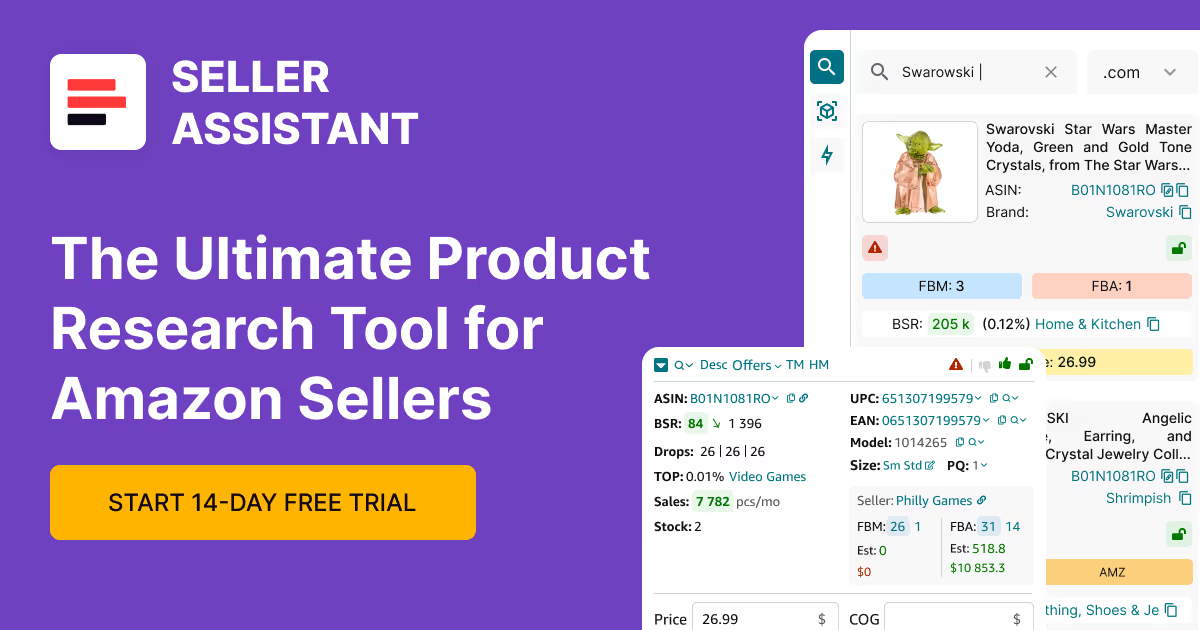
.svg)













